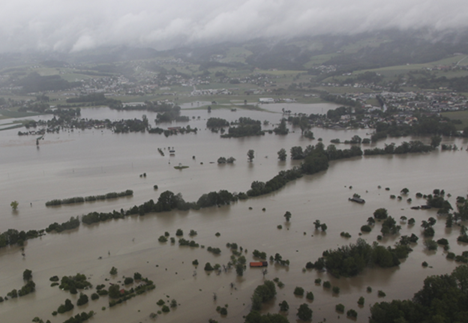Due to attachment to the property and disbelief in repeated high flooding risks the first organised waves of voluntary relocation did not gain sufficient interest from home-owners. However, the extreme floods and high losses of 2002 and 2013 served as ‘eye openers’ and convinced many of the residents to decide on resettlement.
A 250 million EUR budget for flood protection including resettlements and technical flood protection in the Eferdinger Becken was negotiated with the federal government and bindingly secured with a state contract in a record time, unique in the history of the country. This allowed offering 80% of house value compensations to the relocation volunteers, which served as one of the key success factors. The local authorities also designated some limited special relocation areas and fixed land prices to avoid land price speculations.
People who are affected by relocations are confronted with profound changes in their lives. This requires overcoming the emotional attachment to the place and in particular to adapt to the new environment, as well as coping with financial burden and re-building a new neighbourly social network.
The non-movers were most likely older and less mobile people who are in fact less resilient to cope with future flood events. The consequences were higher vulnerability within the remaining communities with the fact that younger people (more likely to be resilient) moved away. Nevertheless, the relocation process can be seen as success story, wherein the exposure and vulnerability to climate change in the flood-prone areas were reduced.
Another success factor seems to be the fact that each property owner can decide on its own if she/he accepts the offer. This is fundamental different to other reallocation action in Austria where the community had to decide commonly for or against the reallocation (e.g. Marchland).



